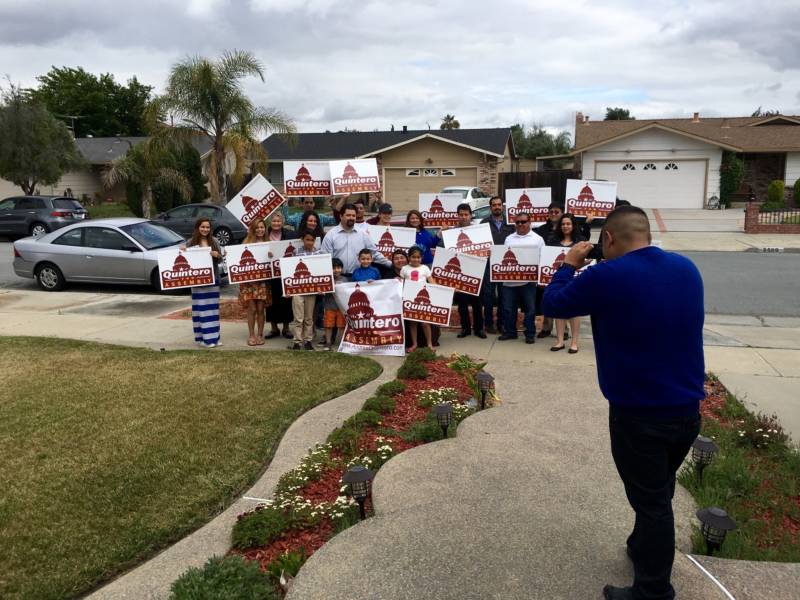By phone, Suguey Hernandez, a senior field director for California's Mobilize the Immigrant Vote, is doing the same thing but is holed up in a cubicle at the office of a San Jose immigrant rights group called SIREN (Services, Immigrants Rights and Education Network). Like Quintero, she learned about the problem of Latino voter participation at an early age.
"My experience with my own family is, often the primary isn't an election that people know about," said Hernandez.
But she said presumptive Republican nominee Donald Trump is starting to turn that notion on its head. And she's hearing about Trump without even bringing up his name.
"Because there is the Trump fear that people are going to be deported more or that communities are going to be broken apart," said Hernandez.
Latino registration is surging in California. And recent polls show Trump's harsh talk about Mexican immigrants is angering Latinos.
Adrian Felix, assistant professor of Latin American studies at UC Santa Cruz, said there's the perfect political storm brewing in Santa Clara County between Trump's anti-immigrant climate and local concerns about education and safety for Latino residents. Now, he said, is the time to aggressively register Latinos.
"We need this sort of bottom-up approach to spread the word to educate the community and to encourage people to register and come out on voting day," said Felix. "Latinos are not a single-issue constituency. Like any other voting bloc, they're concerned about a multiplicity of issues."
And that's why Quintero is working the neighborhoods hard. On a rainy Saturday morning, Gilbert Medina let Quintero into his San Jose home and said he'll vote in the primary and general election. But he laughed off Trump as the motivator.
He wants better schools for his grandson.
"We come from Mexico with no educations, me and my wife. My sons -- only one or two have a high school diploma -- it's very hard for them. Maybe the next generation will have a better education," said Medina.
And that next generation still lives with him. Now Medina's son, Gilbert Jr., wants better law enforcement so he can walk his son to school.
"More police officers, more security," said Medina. "I want to be able to walk out and take my son for a walk."
But these reliable voters aren't the norm in Santa Clara County or around the state. Two million California Latinos are eligible to vote but don't register, according to a recent Pew Research Center study.
"In the last five presidential elections we have voted 20 percent below the white vote, and so we have a phenomenon where Latinos will soon be the majority in Santa Clara County. Still the white population, they continue to call the shots," said Chava Bustamante, director of Latinos United for a New America (LUNA) in San Jose.
But Bustamante admits the efforts to mobilize Latino voters here is fragmented, with no central coordinator. And there's little funding for the primary.
But in the fall, Latino leaders will invest more resources -- going door to door to target 4,000 Latino immigrants who seldom vote. They'll encourage them to sign up for vote-by-mail, then hold nonpartisan house parties in 10 precincts.
"The idea is for people to discuss the pros and cons of what we're voting for and then vote, and then take those ballots to the registrar of voters," said Bustamante.
Santa Clara County's Republican and Democratic parties also plan to canvass neighborhoods together this fall to get Latinos to register to vote.
